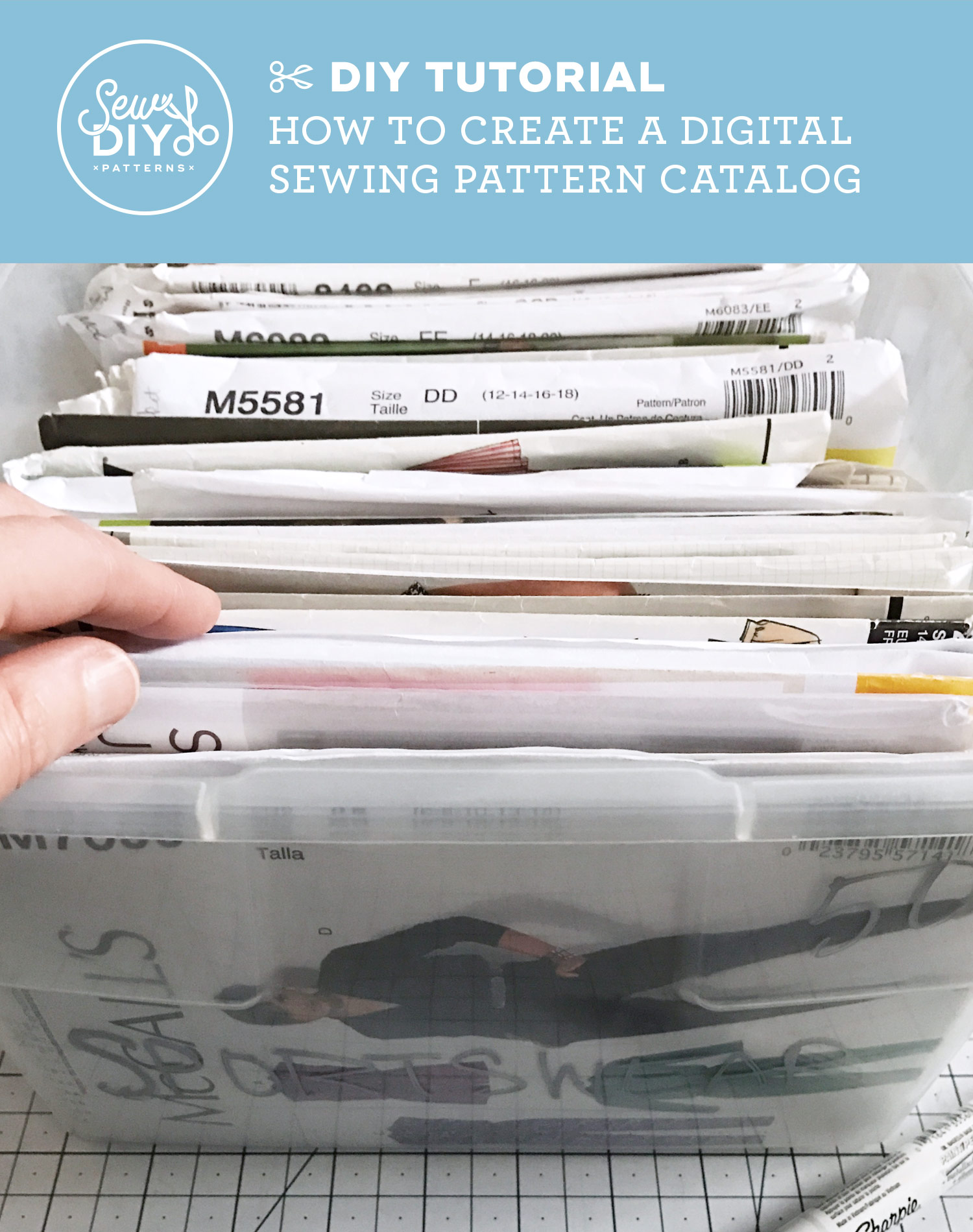How to create a Sewing Pattern Catalog using Evernote
For years I've been searching for an easy way to digitally catalog my 100+ sewing patterns. I've tried a few free online sites and I know there are others you can purchase but so far haven't been satisfied. I wanted something quick, visual and portable. I really wanted something like Ravelry but for sewing (if you are a knitter you know what I'm talking about). I know there are some sites developing out there but the ones I tried were too time consuming or confusing.
I already have my sewing patterns organized by type in plastic storage bins. The bins are the perfect width for an average size sewing pattern (see above) and store nicely on shelves in my hall closet. Would you believe that I have 7 bins and some are starting to overflow? I know. Crazy. I really am trying to cut back on my pattern purchases. But when those Jo-Anns pattern sales hit, it's hard to resist.
Anyway, currently, when I want to check and see if I own a particular pattern, I pull down the bin labeled Sportswear, for instance, and sift through. But wouldn't it be handy, if I'm on my laptop or even at the fabric store to be able to open up a program and see which patterns I have?
Enter Evernote. As I explained last week, Evernote is a great way to organize and catalog information that you can access online, on your home computer or smartphone. I really like how visual it is (see below). There are a few ways you can set up your own sewing pattern catalog. Here's how I did mine.
1. First, I took a quick picture of every pattern using my iPhone. I know it sounds tedious but it goes pretty quickly and in the end it's worth it. You could use any digital camera but it's so easy with the iPhone. I was not worried about picture quality as this is just for reference.
2. Upload the photos to your computer. Crop and downsize if desired. I exported the photos from iPhoto with a maximum 800 pixels and named them with the pattern make and number. It's worth the time to name the images because the name will show up in Evernote as the name of the note and it will be searchable. For my 170 photos this took a couple of hours.
3. In my Evernote account, I created a notebook for each category, similar to my bin organization. For example, above is my notebook "Sewing Patterns Bottoms". It contains pants, shorts and skirt patterns. Inside a notebook you can upload photos or pdfs of sewing patterns.
4. Drag the photos to their corresponding notebook. Just drag a whole category together and Evernote will create a separate note for each image. The name that you gave the image will appear as the name of the note. Later, if you want to see all of your Vogue patterns just type Vogue in the search field and all of the patterns will appear (see above). Pretty cool, right?
Other options and ideas:
Another way to organize your catalog is to create one notebook that contains a note for each category. Each category note will then contain all patterns in that category. I organized my library like this at first because I didn't want a bunch of notebooks cluttering my account. But I wanted to be able to see each pattern without opening a note so I went with the method above.
Instead of taking photos, you could use Evernote to clip an image of the pattern from the pattern company's website and save it as a note. Of course, this will only work for patterns currently in production.
I always have a hard time classifying sportswear patterns because they cross over multiple categories. Sometimes, if I only like the blouse in a sportswear pattern, I'll store it under Tops. In Evernote, you could store a copy in multiple categories.
The Evernote app does allow you to take photos but I had some trouble syncing the large amount of photos I was taking. So, I recommend this method instead. Later if you're just adding one photo, taking a photo with Evernote would be very efficient.
I'm pretty excited about this catalog system. How do you catalog your sewing or knitting patterns?











